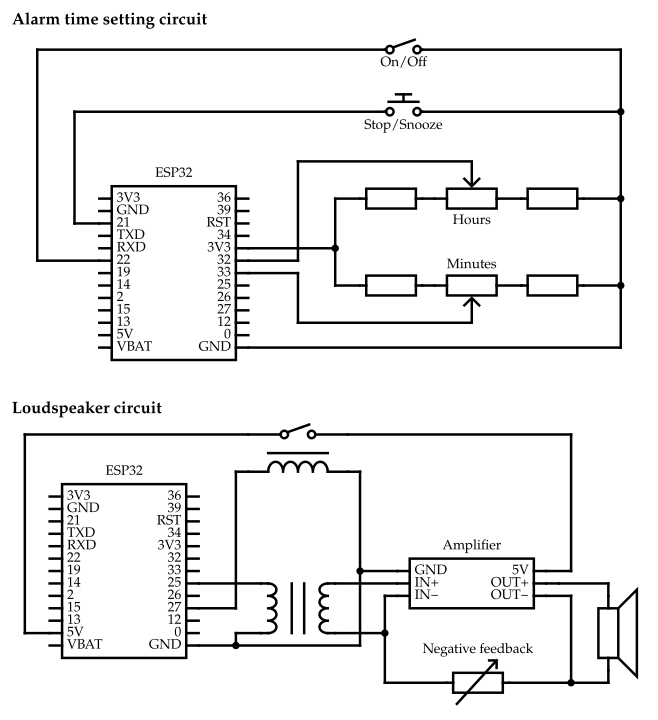This is an alarm clock based on an ESP-32 microcontroller. It has the following features.
- An e-paper screen display.
- Potentiometers to set the alarm time (one for hours, the other for minutes).
- A potentiometers calibration procedure.
- A switch to activate or deactivate the alarm.
- A button to stop the alarm.
- The same button to snooze for 5 minutes if held down.
- Time update from the Internet via Wi-Fi.
- Automatic Wi-Fi reconnection.
- Streaming of ringings from an SD card.
- Random ringing selection.
- An over-engineered, multi-threaded, and real-time software.
I reused and adapted the housing of a fifty year old Heathkit GC-1005 from 1972. Some parts have been drilled, and supports have been 3D printed.
The project has been made with ESP-IDF v4.3.2. The following commands can be used to compile and to setup the project. For more information, please refer to Espressif's documentation.
# Compile the software
idf.py build
# Flash the ESP-32 ROM
idf.py flash
# Print logs during execution
idf.py monitor
# Configure the project
idf.py menuconfigThe project has been configured with the default settings, except for the following.
Compiler options --> Optimization Level -> Optimize for performance (-O2)
Component config --> Wi-Fi --> WiFi NVS flash --> Off
Component config --> FAT Filesystem support --> Long filename buffer in heap
By default, the program will look for a config.json file at the root of the SD card. As for ringings, they can be placed in the ringings folder at the root of the file system. However, file paths (and GPIOs) can be configured in config.h.
The config.json file takes the following form. Timezone setting follows POSIX timezone format.
{
"wifi": {
"ssid": "...",
"password": "..."
},
"ntp": {
"server": "pool.ntp.org",
"timezone": "GMT"
}
}Ringing files must be encoded in raw PCM (mono channel, 8 bit samples, 44100 Hz rate). The alarm clock will randomly choose a ringing from the ringings directory every time the alarm rings.
The source code consists of different modules sending and receiving events. Each module covers a specific concern and run on separate threads.
The microcontroller I used is a LILYGO® T5 V2.3.1 2.13". It has a built-in e-paper screen and microSD card reader. The unit is wired as shown in the following circuit diagrams.
The project is under an MIT license.
© 2022, Pierre Luycx





